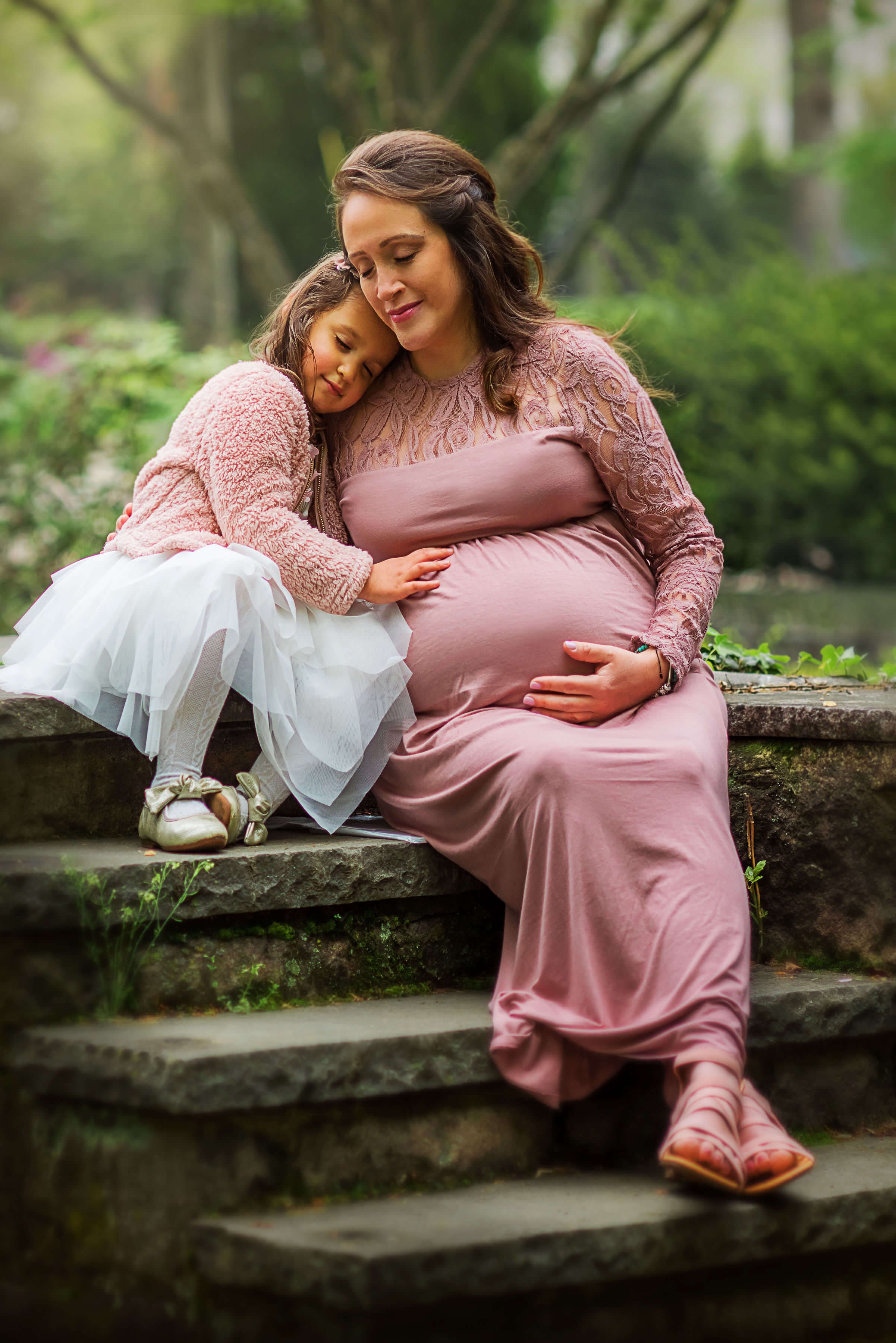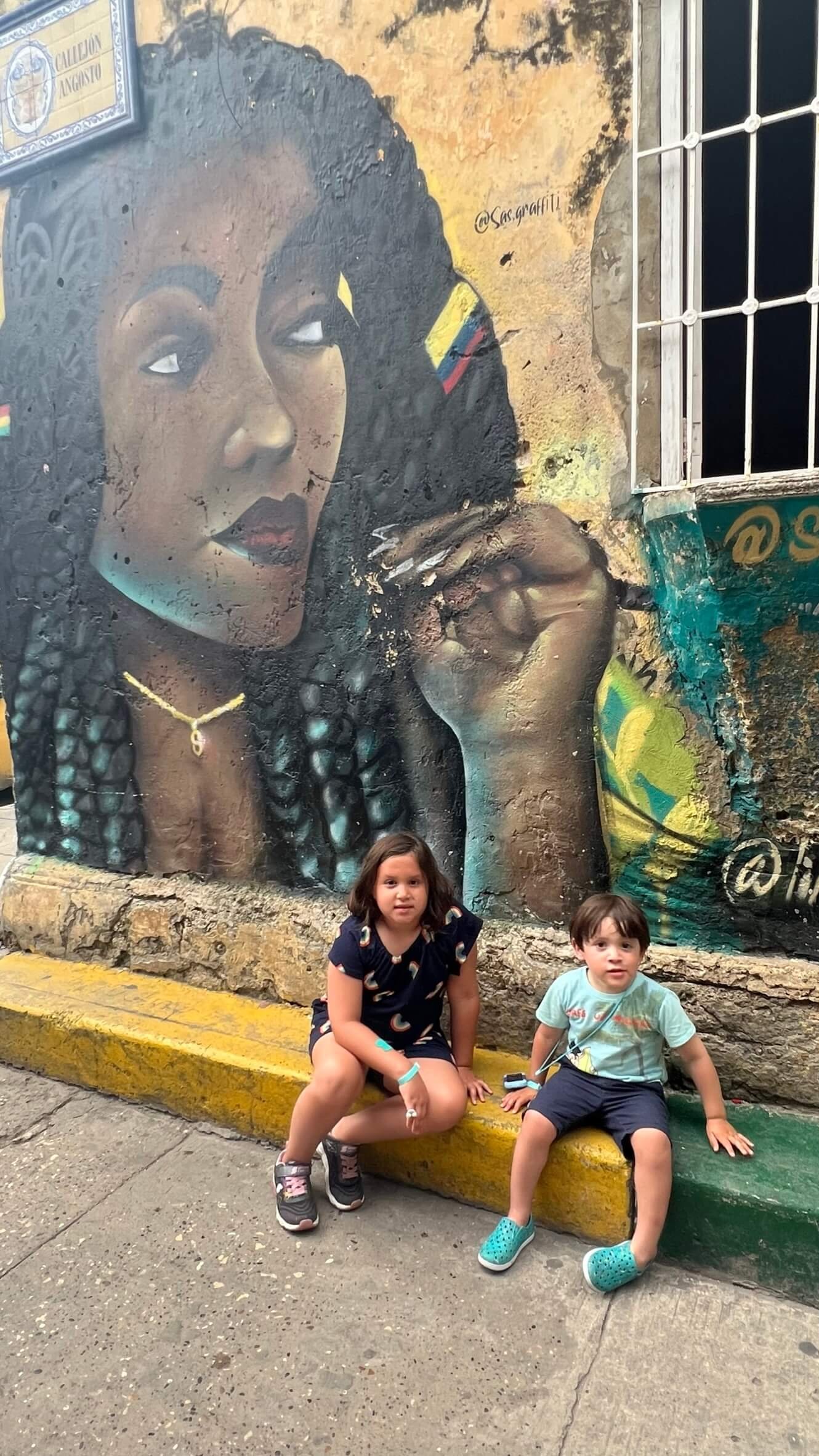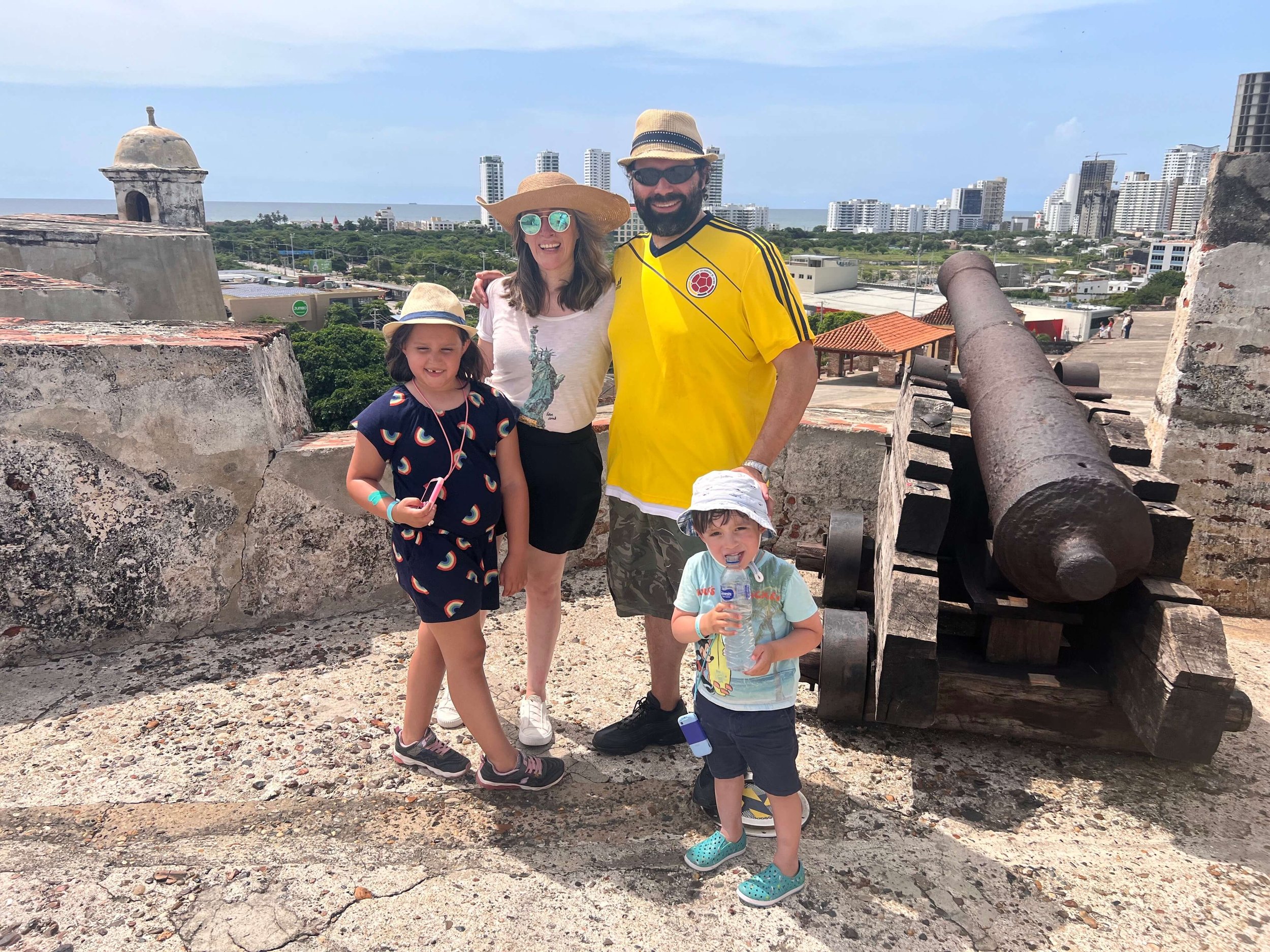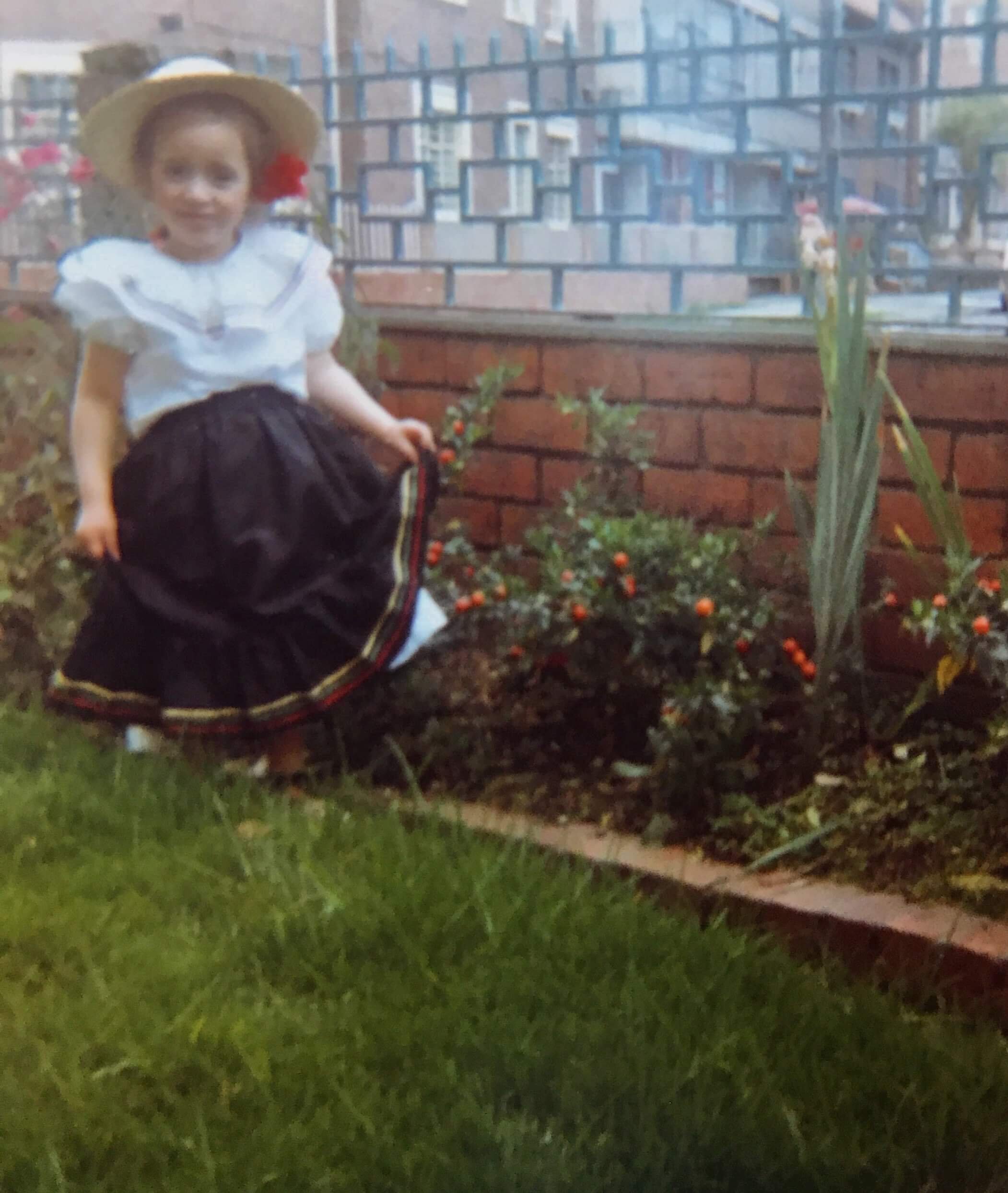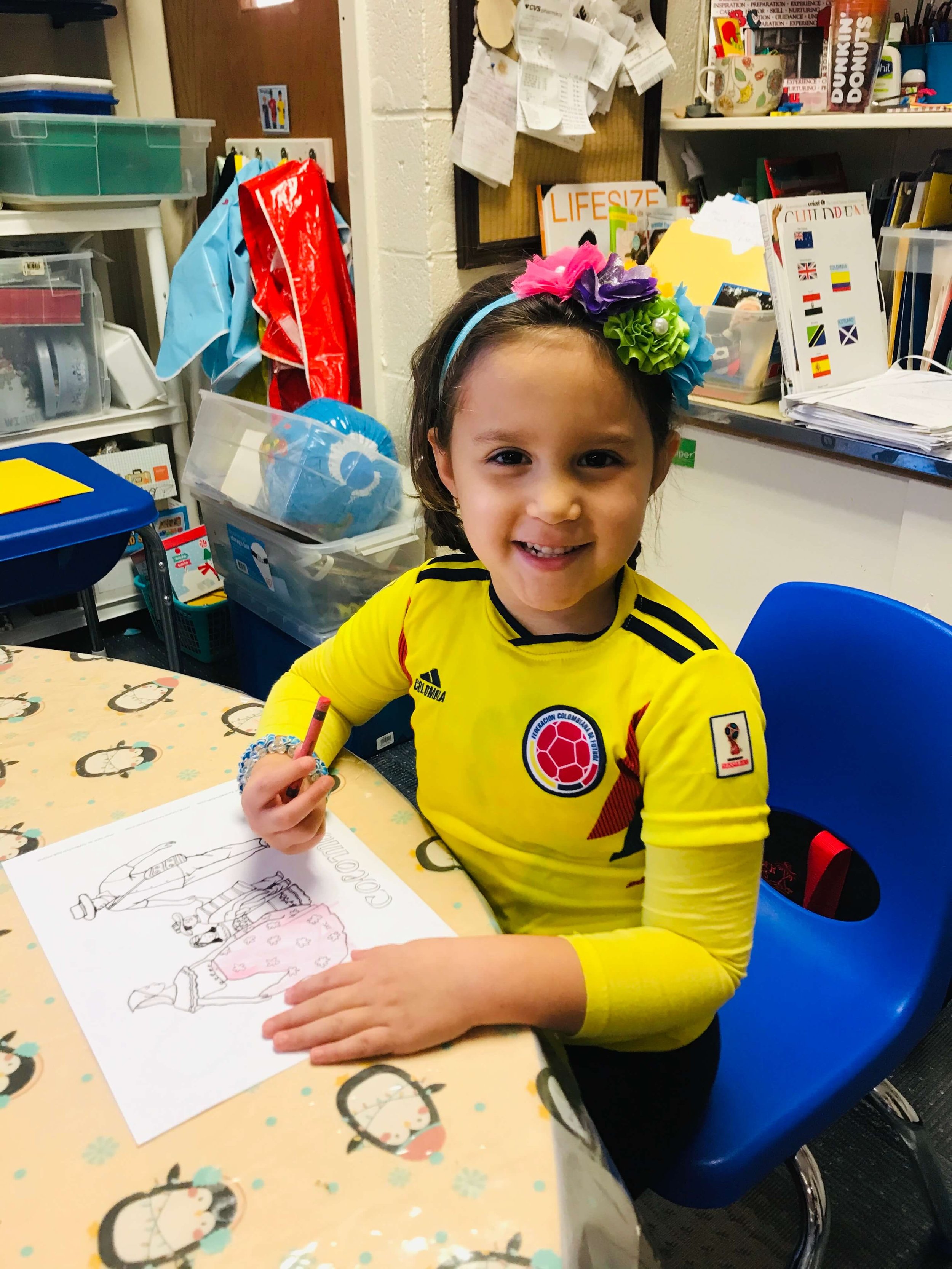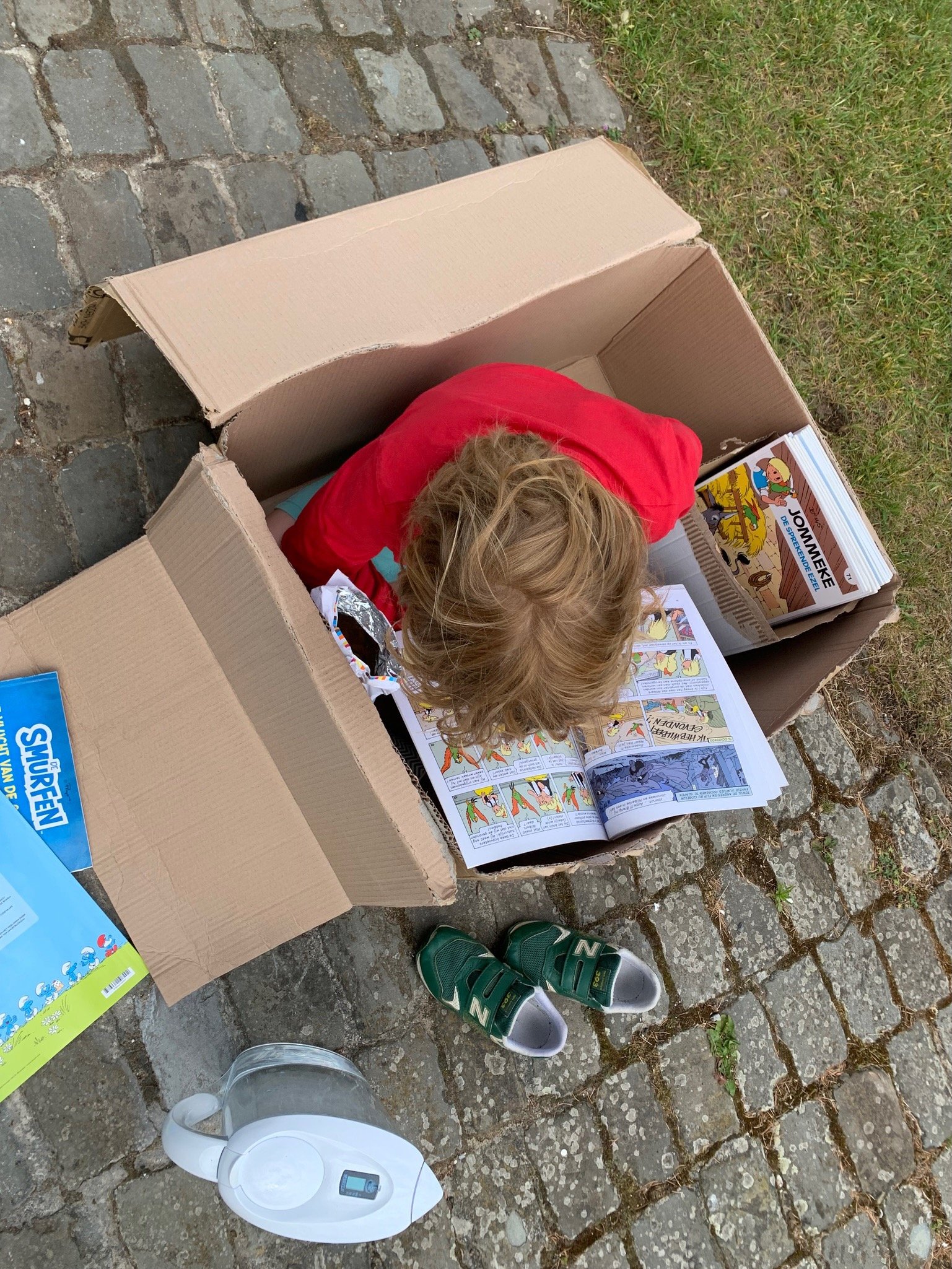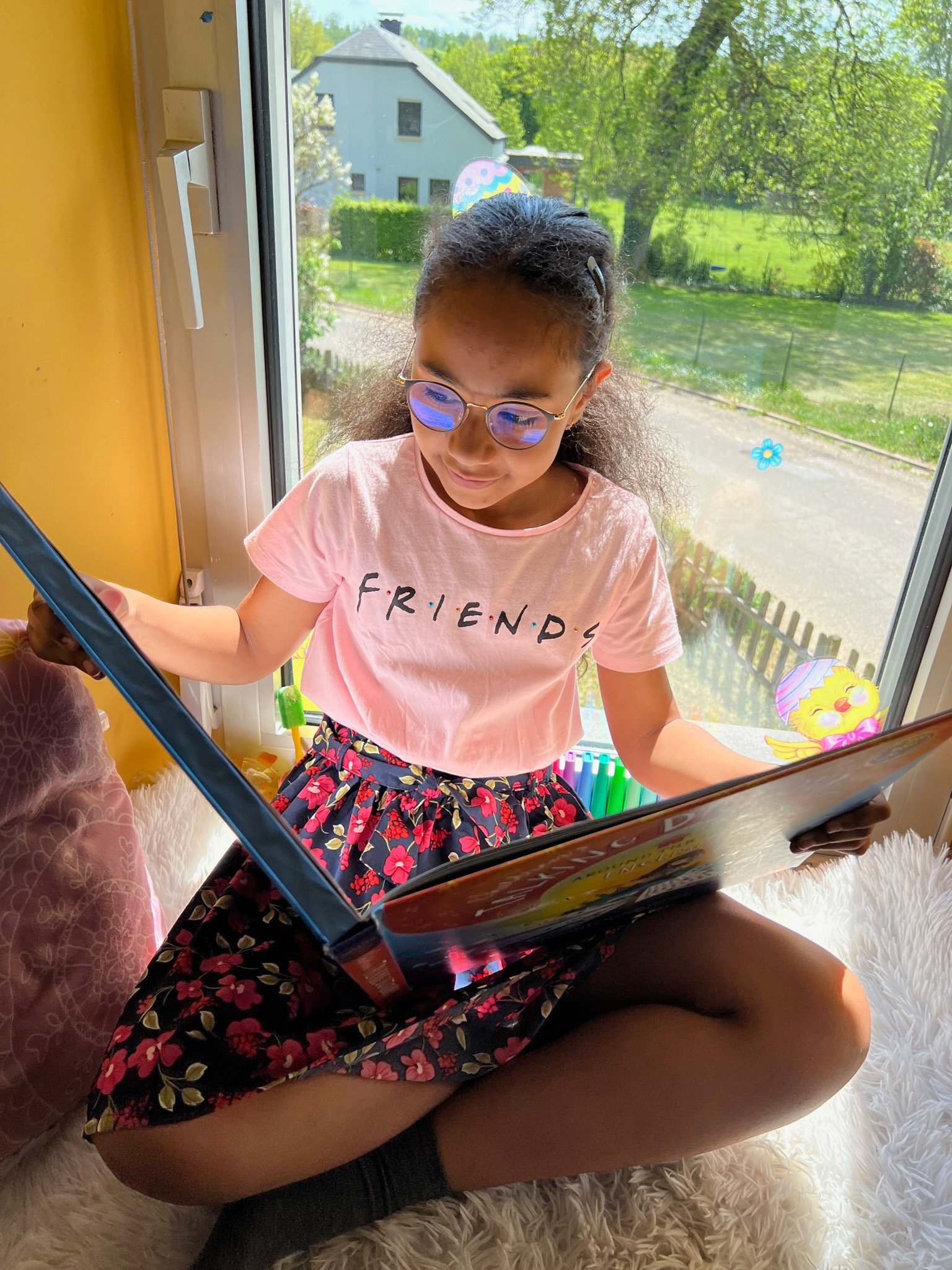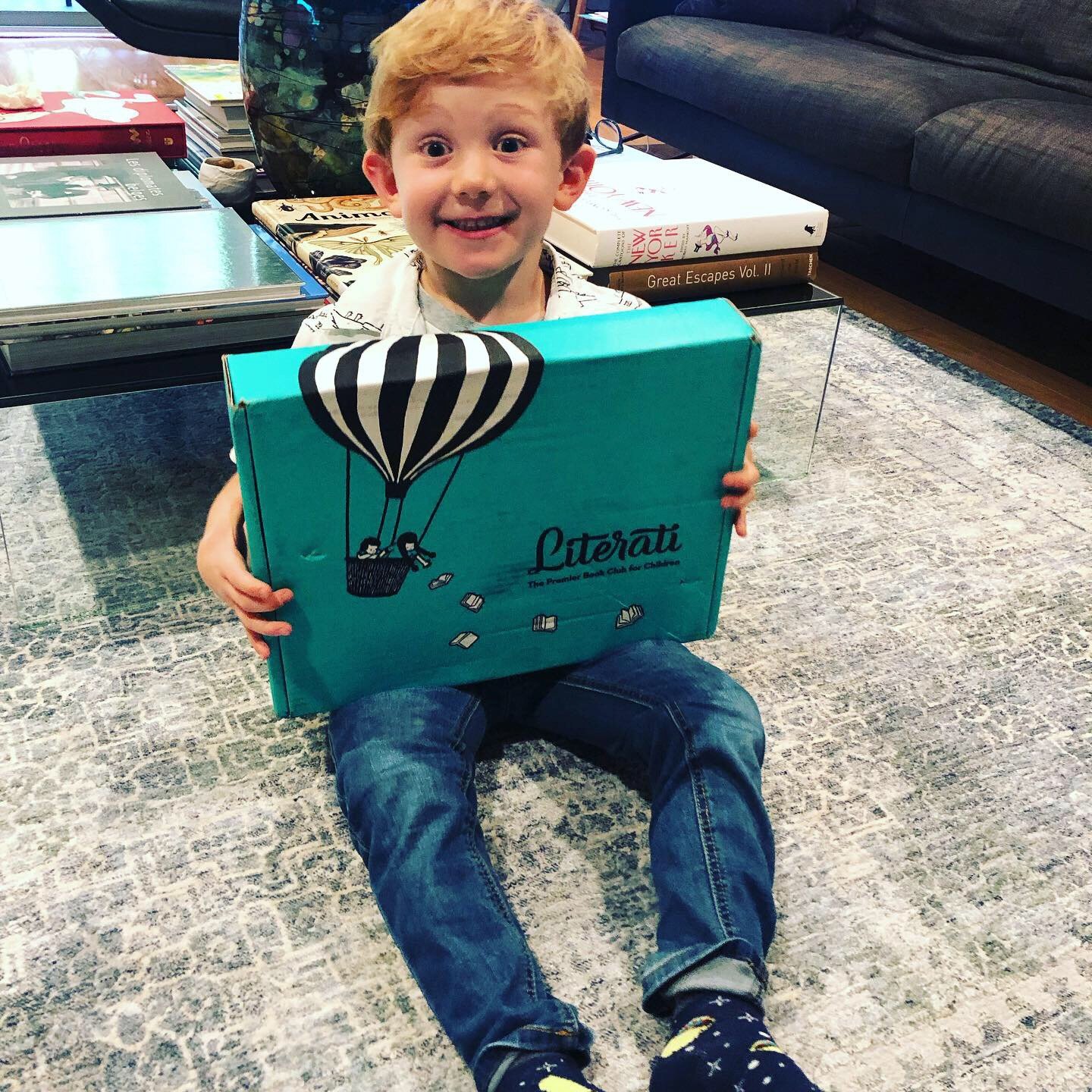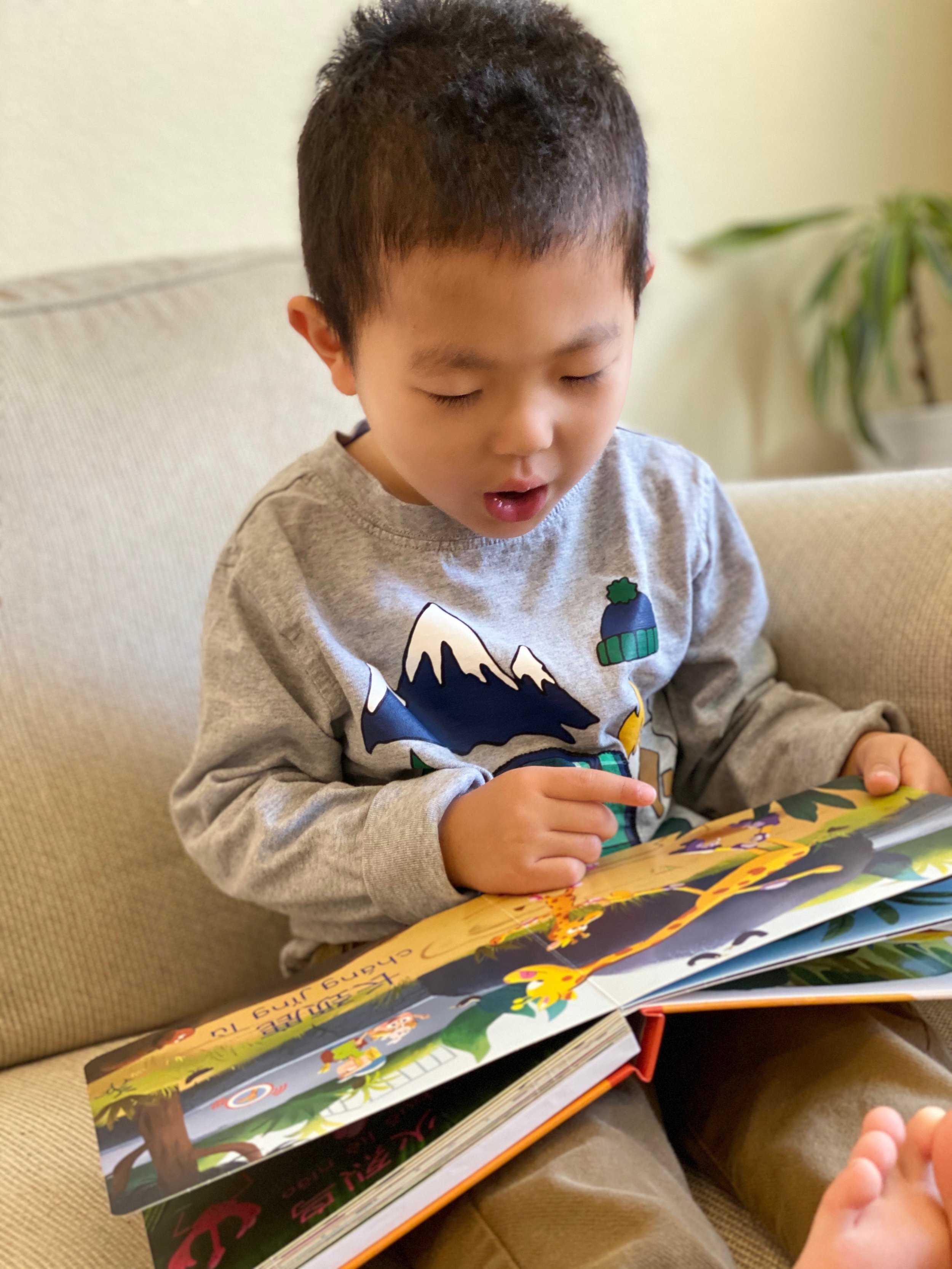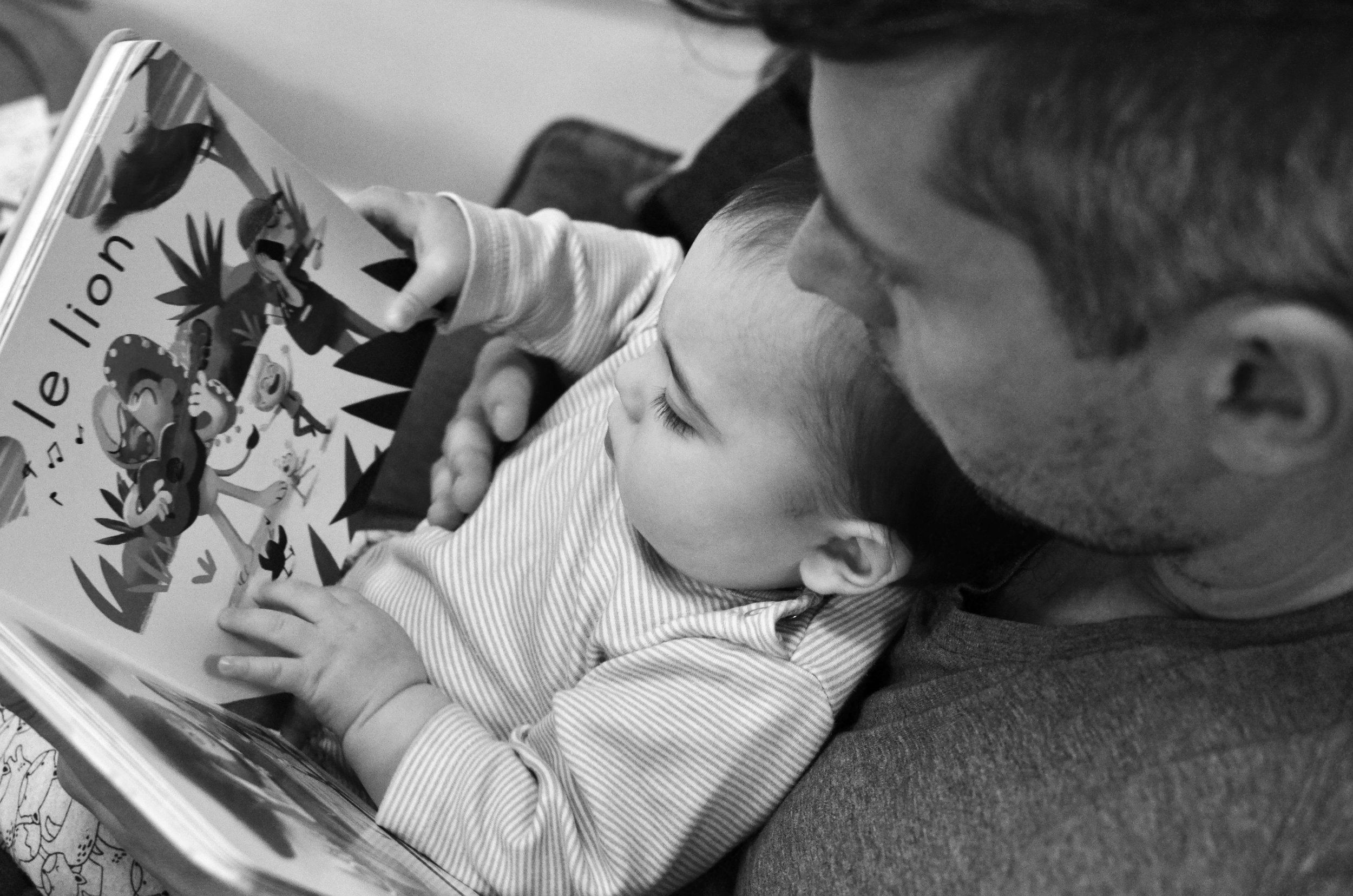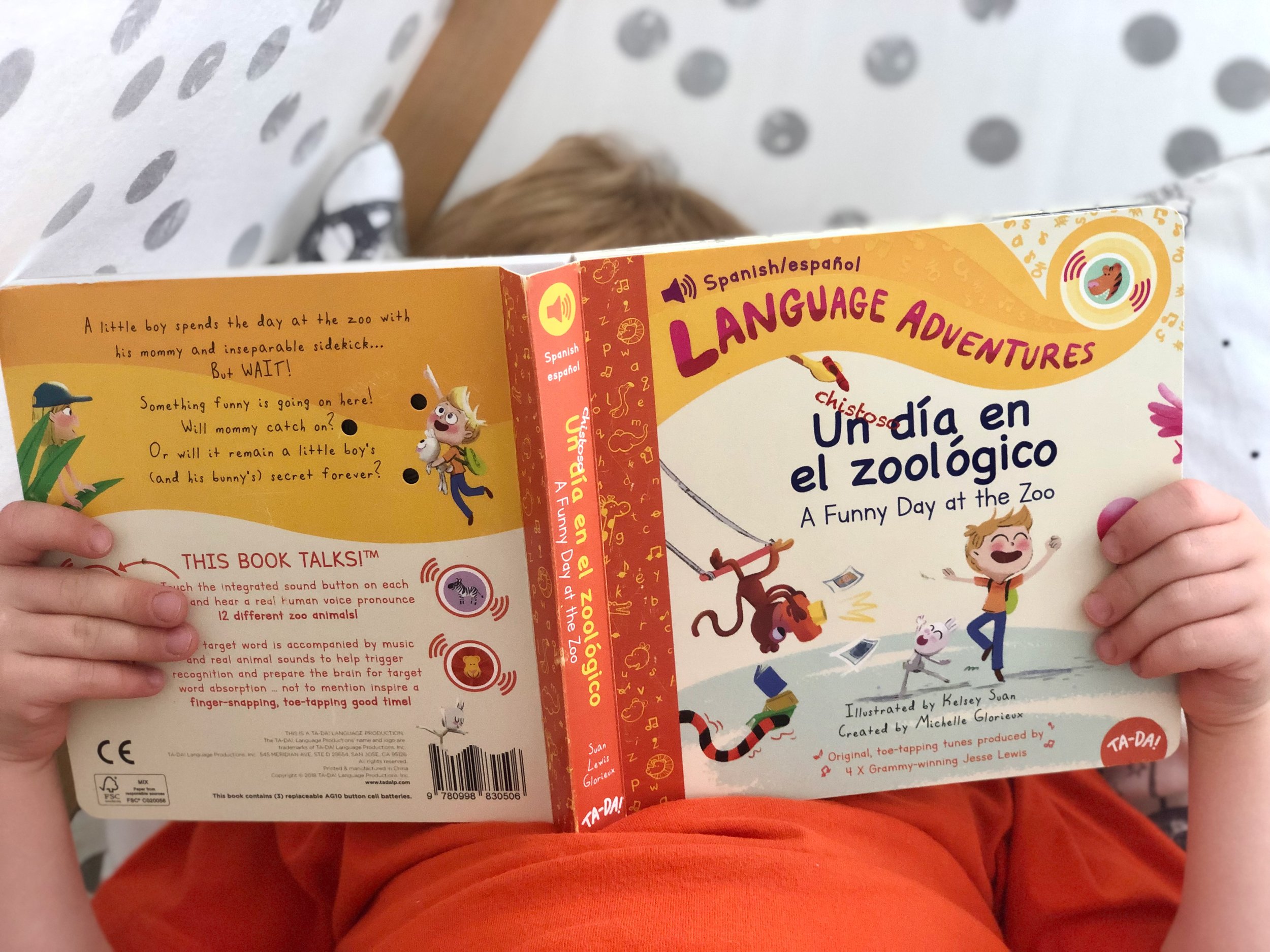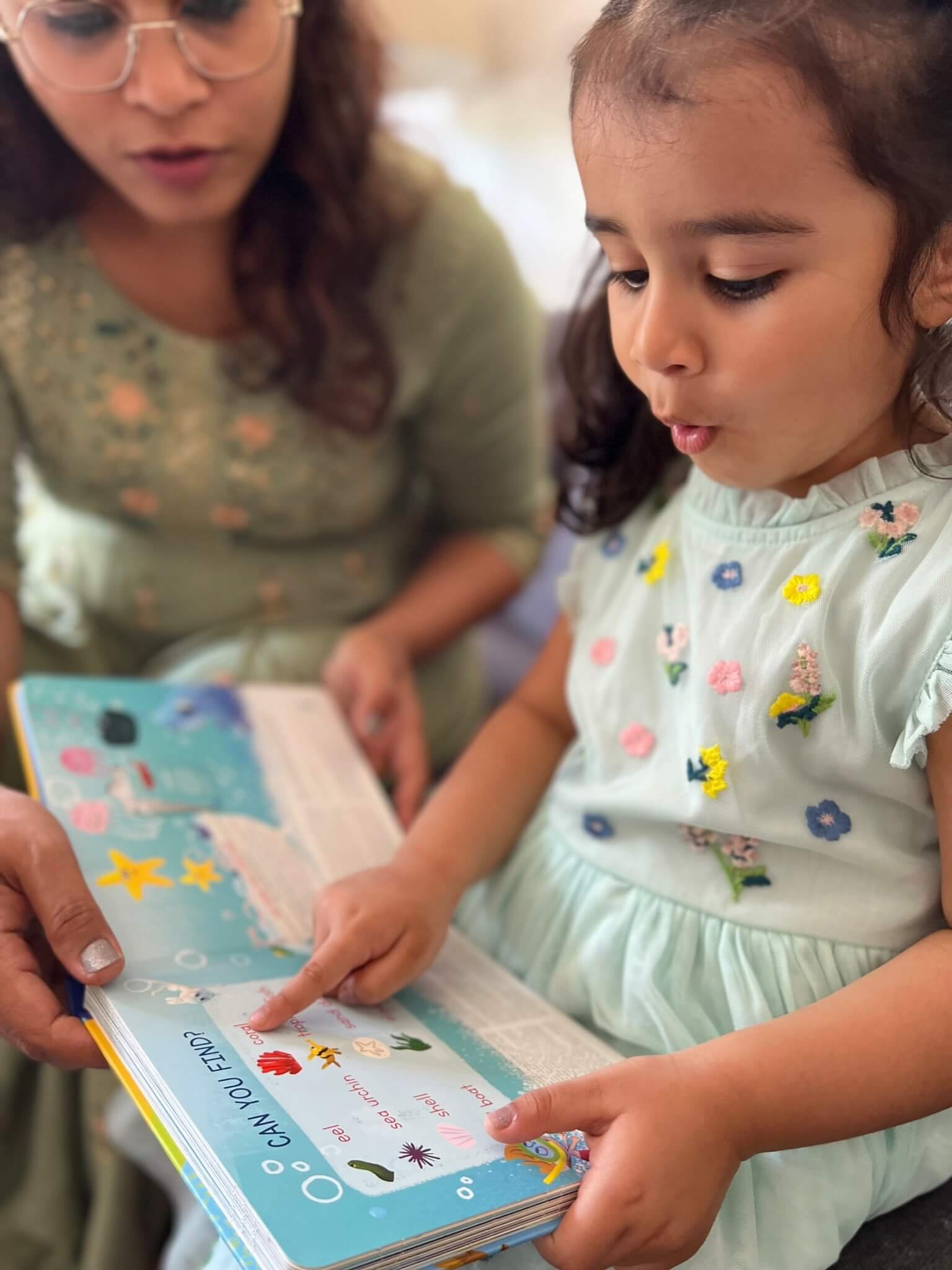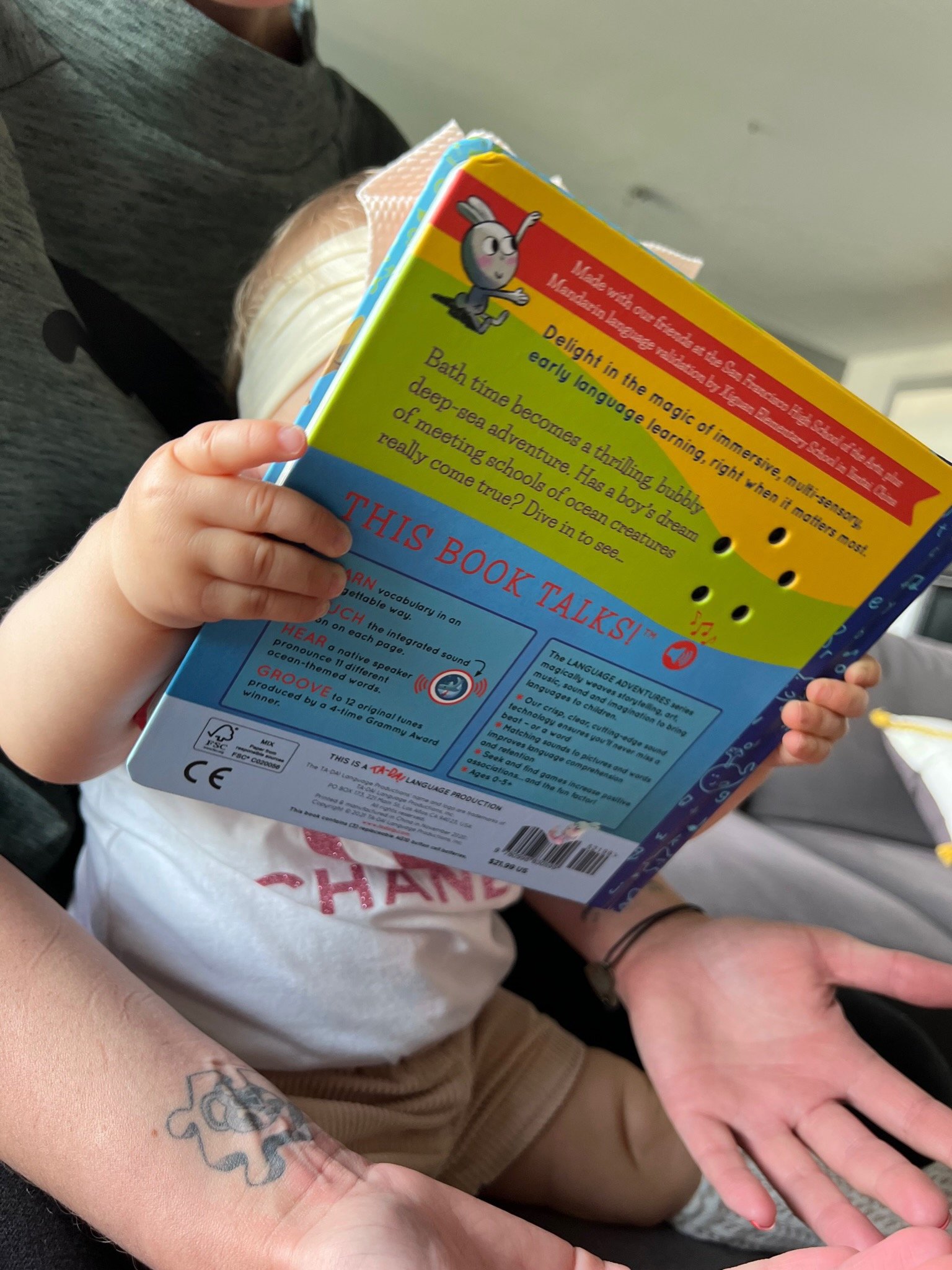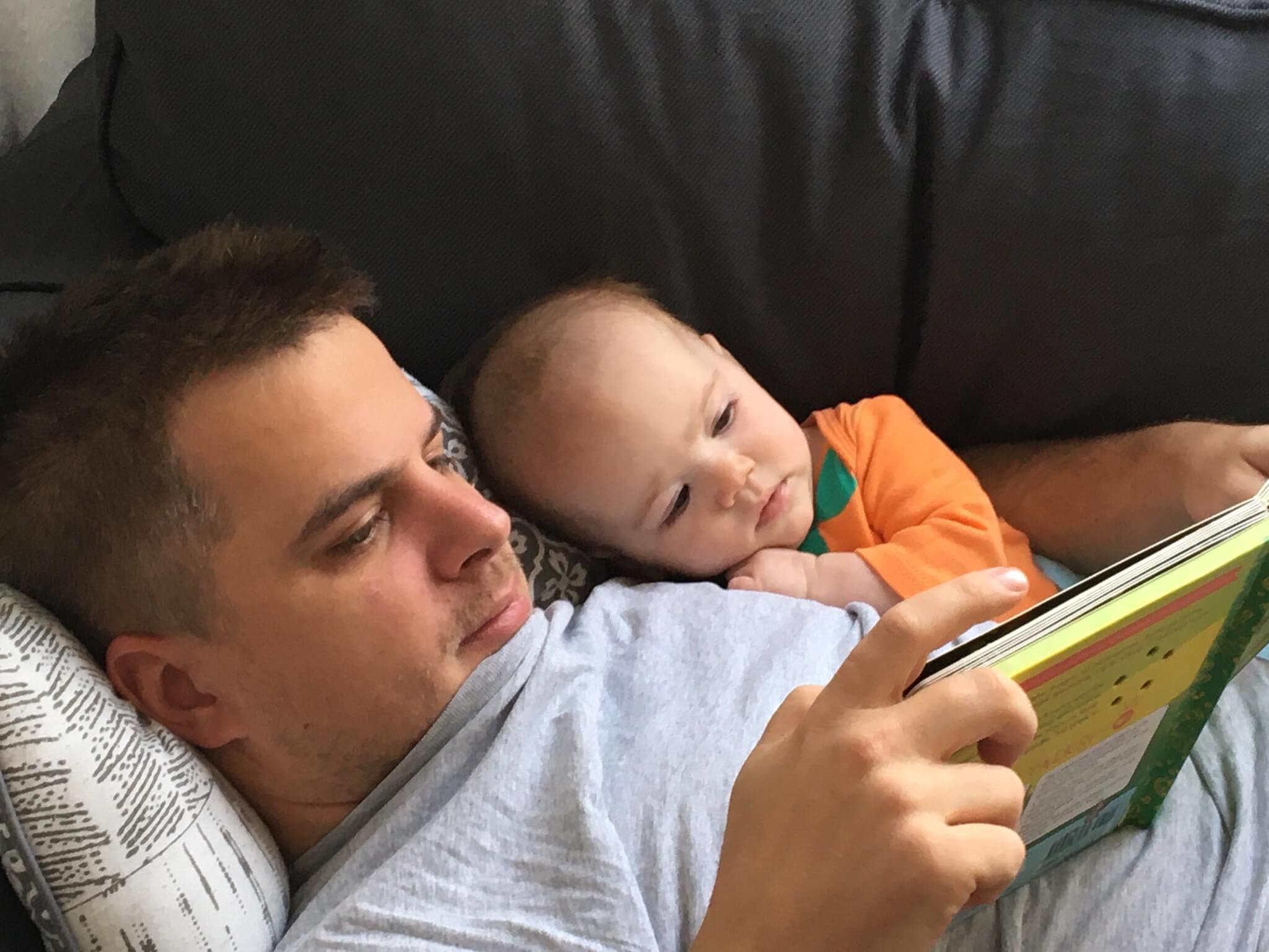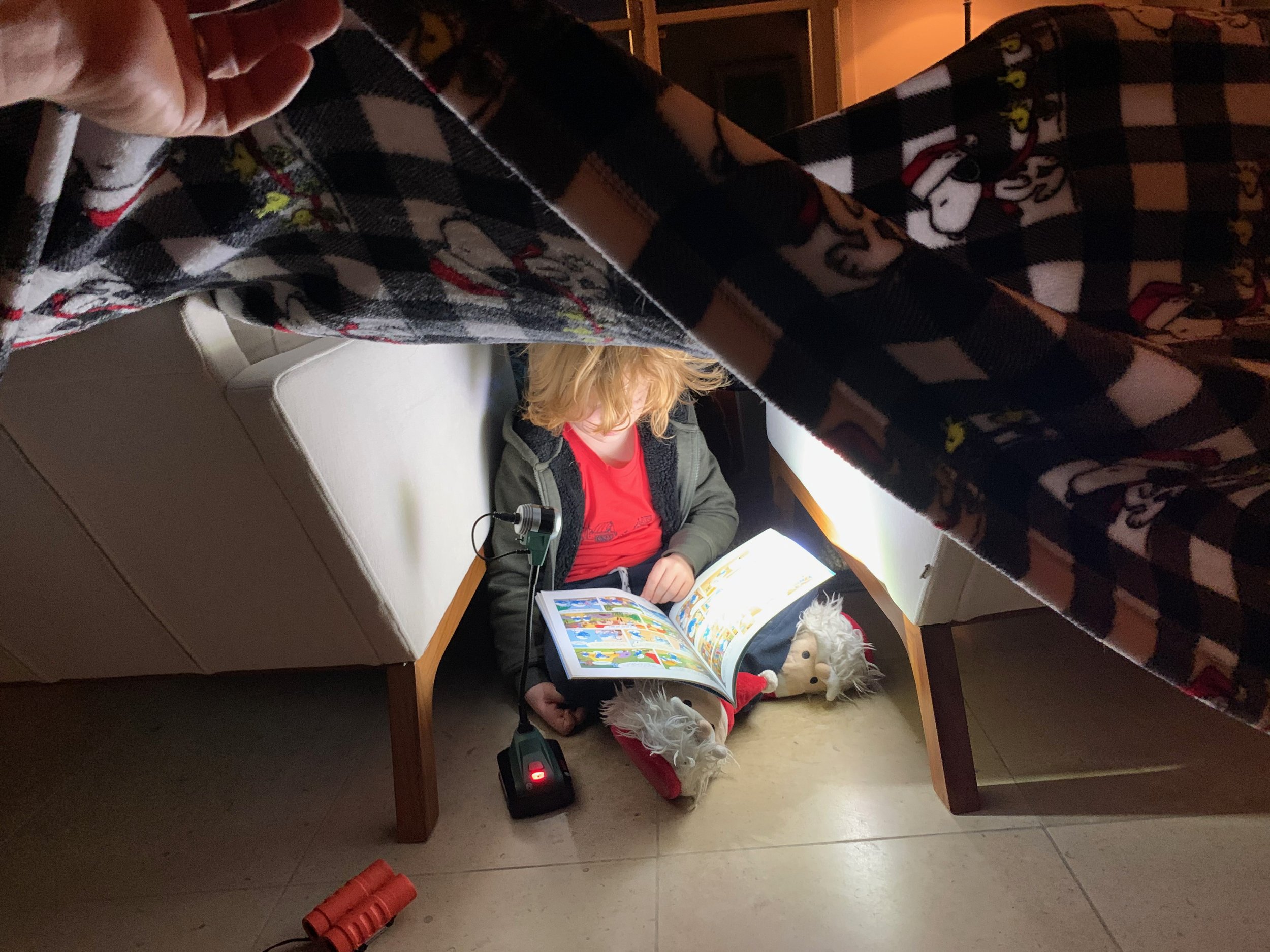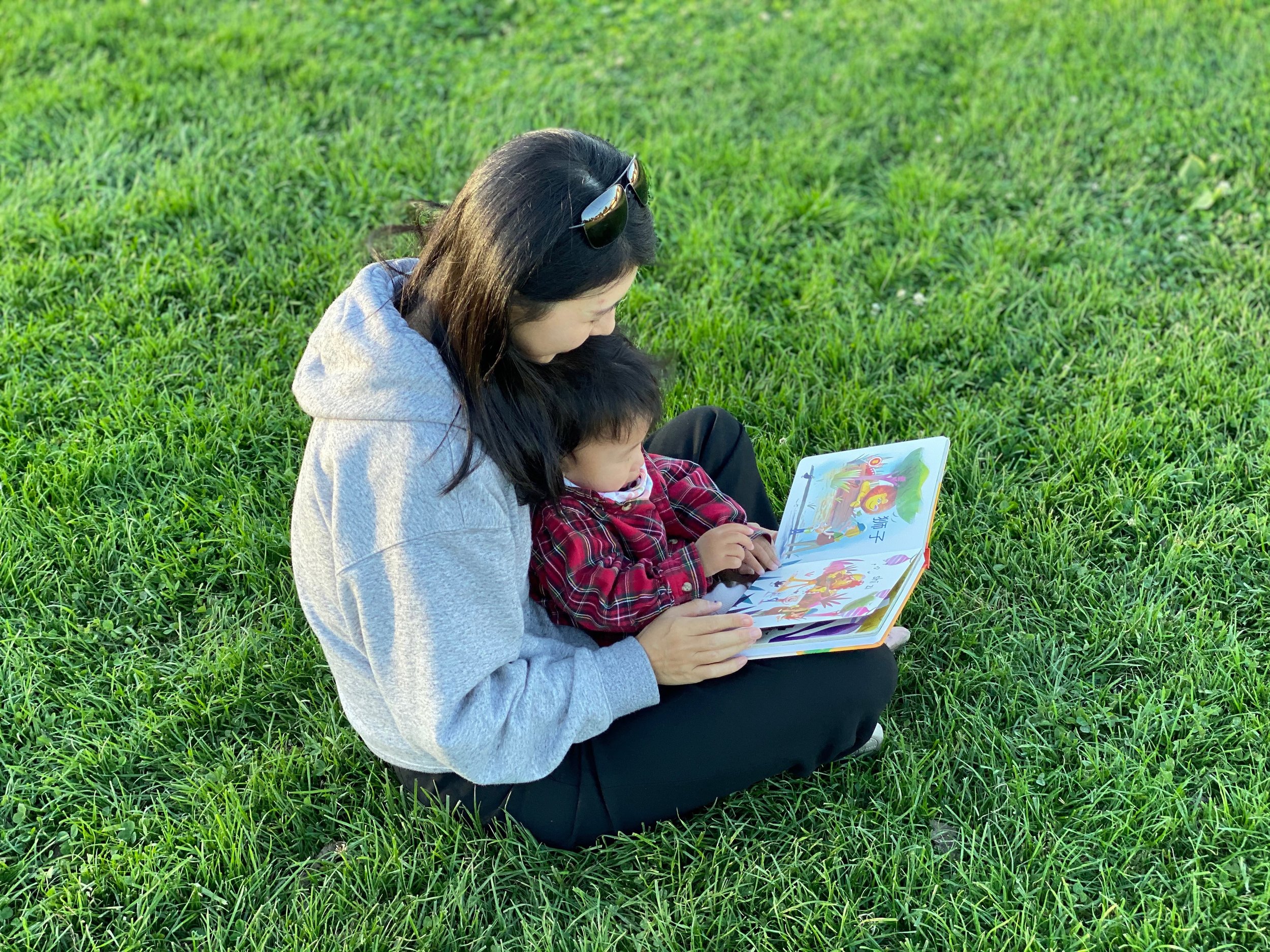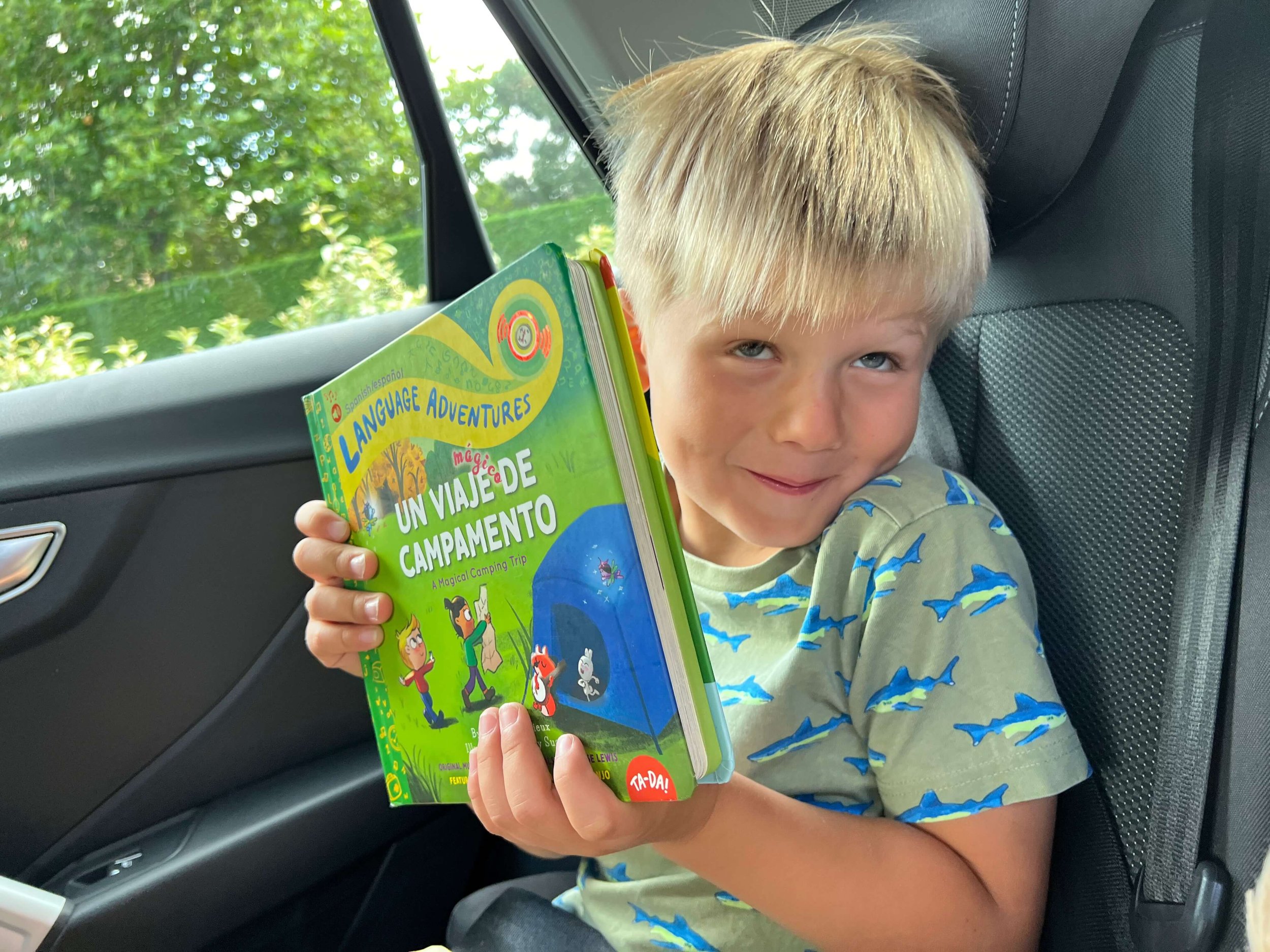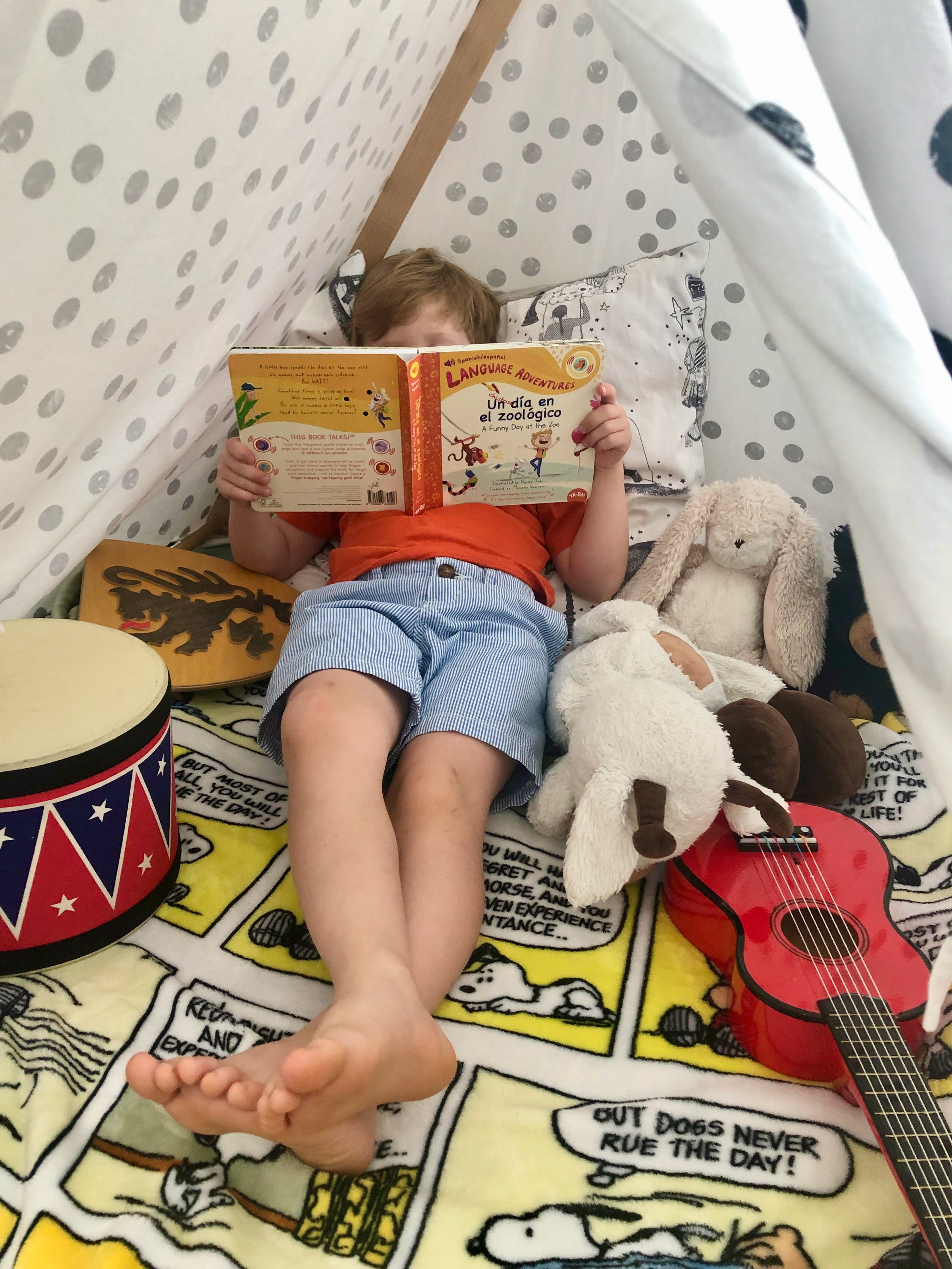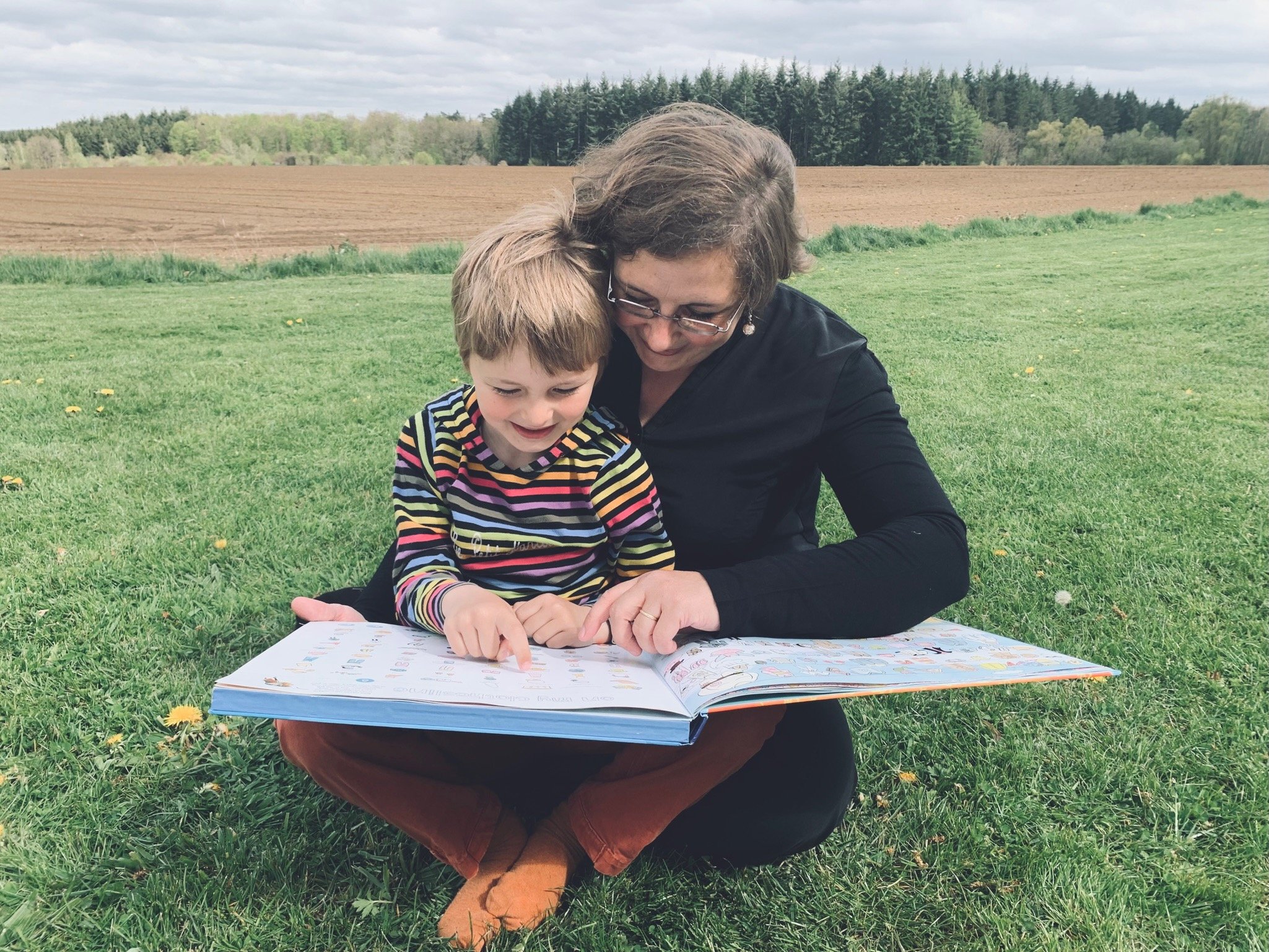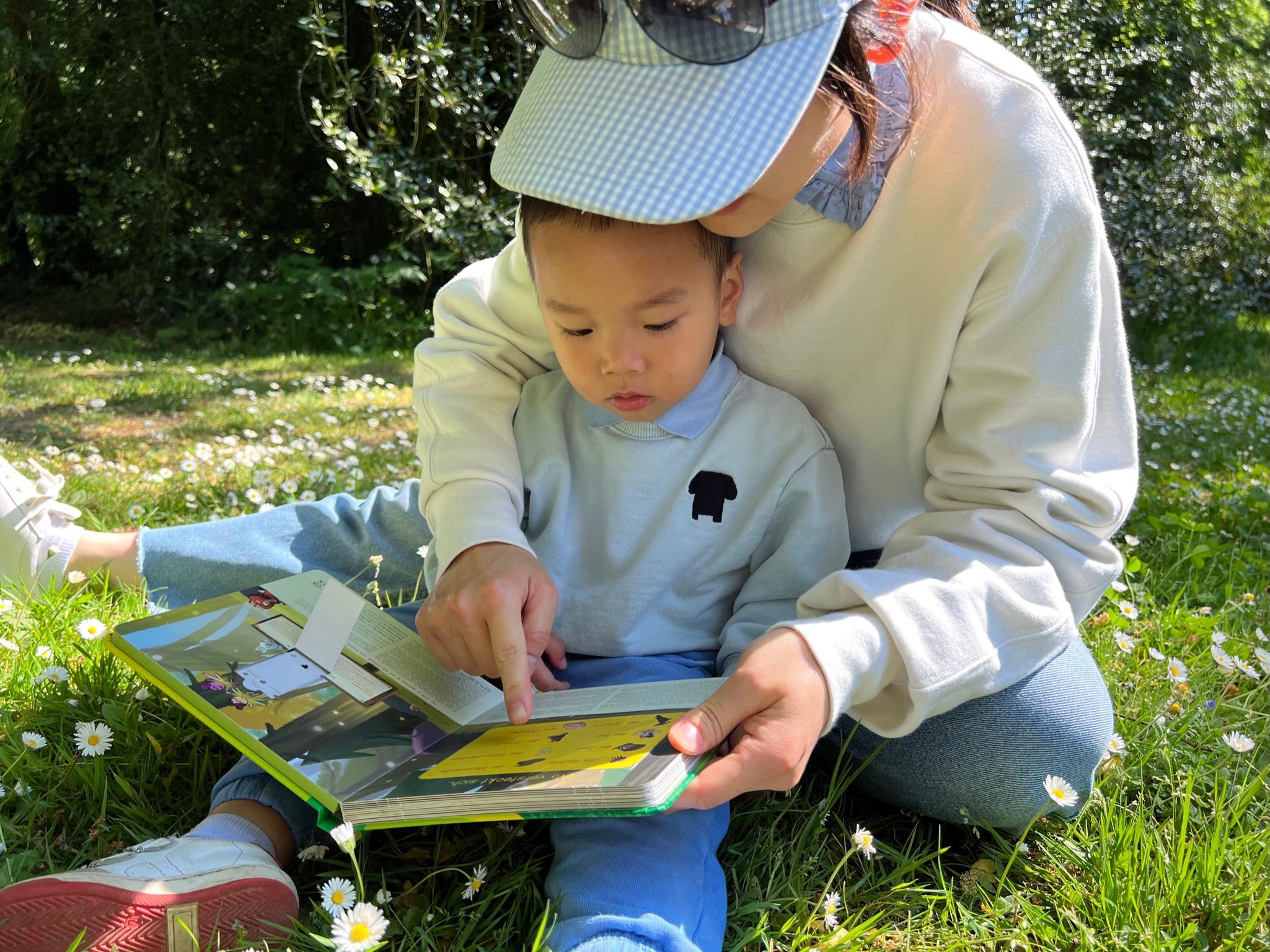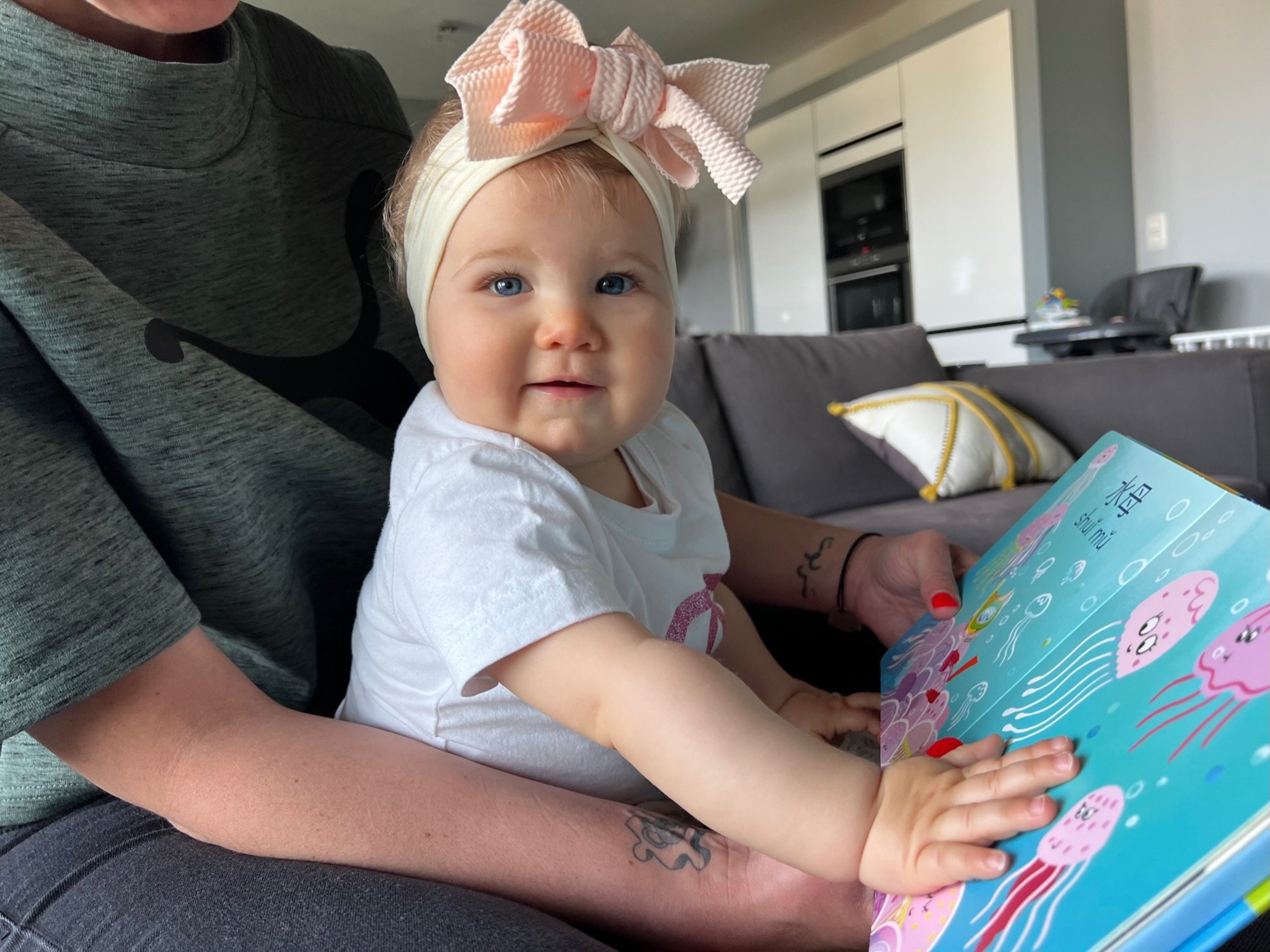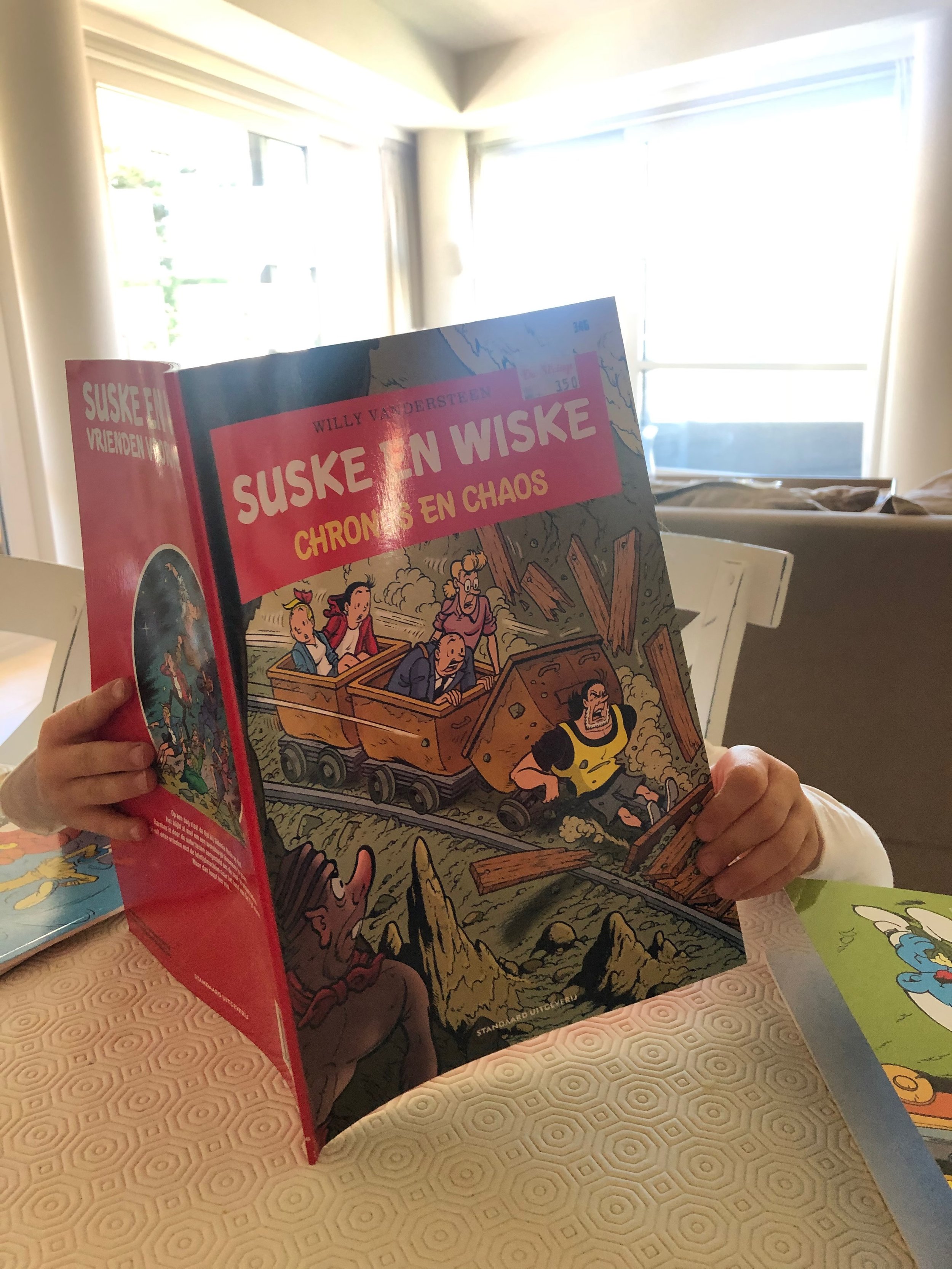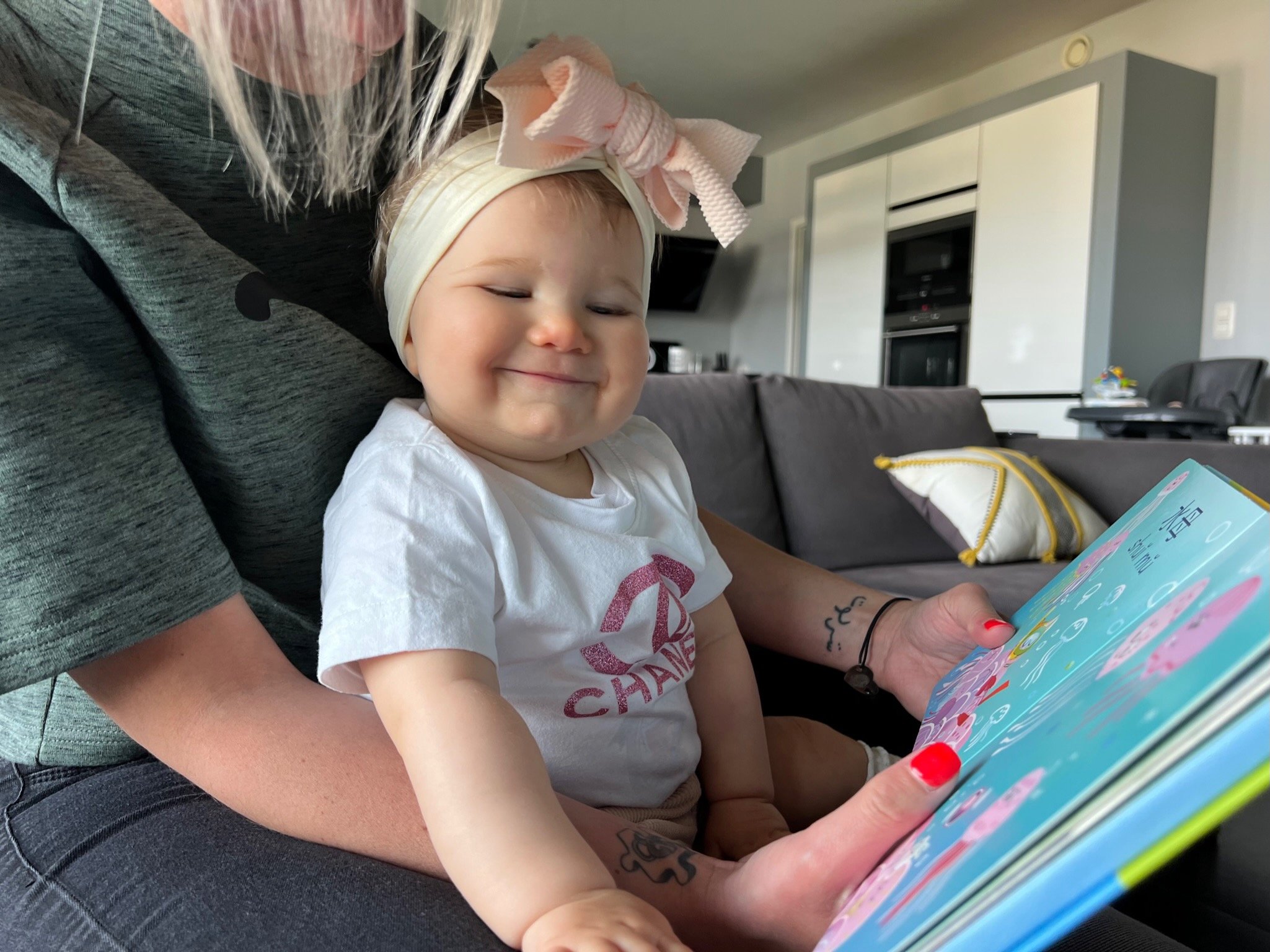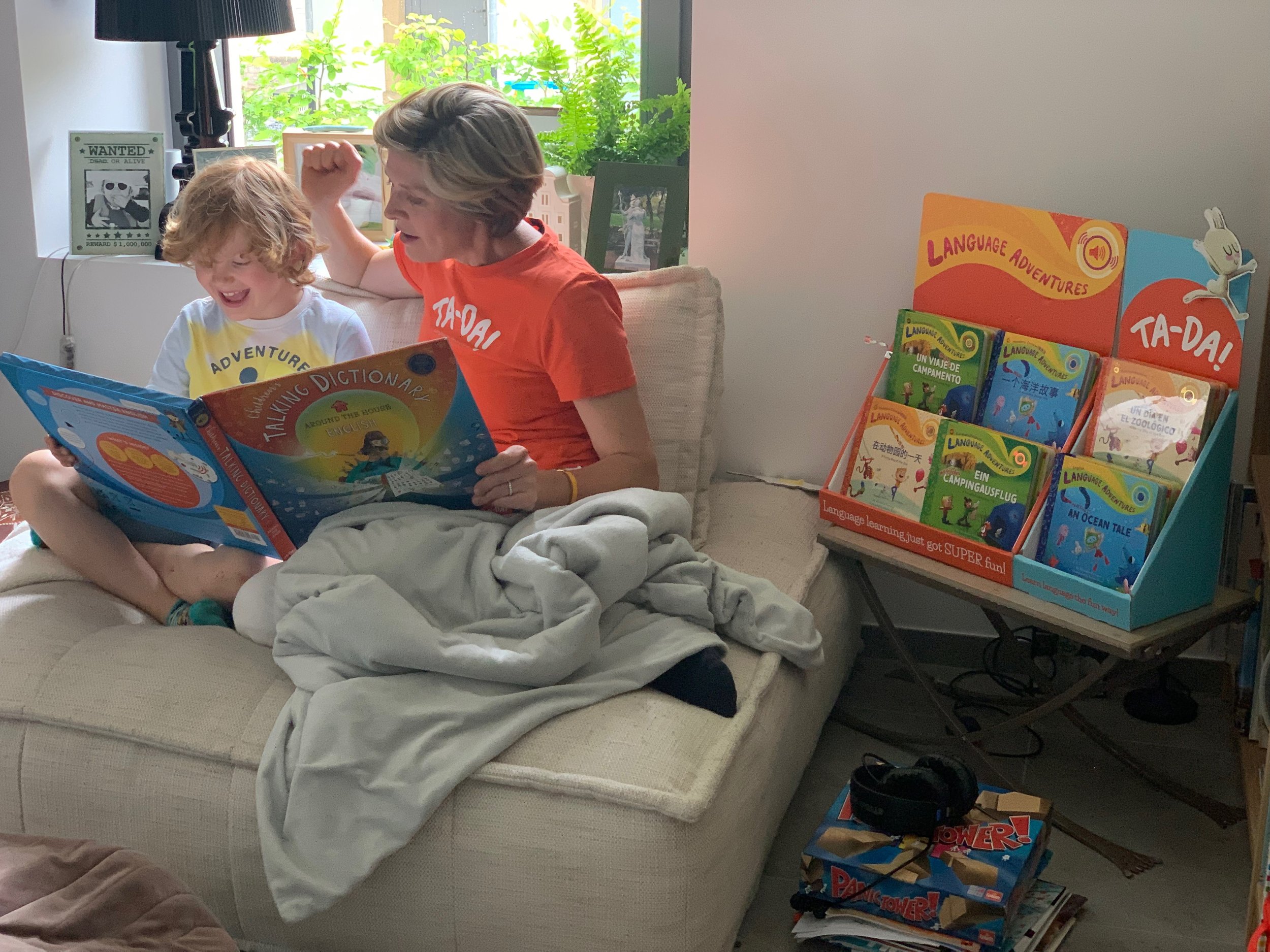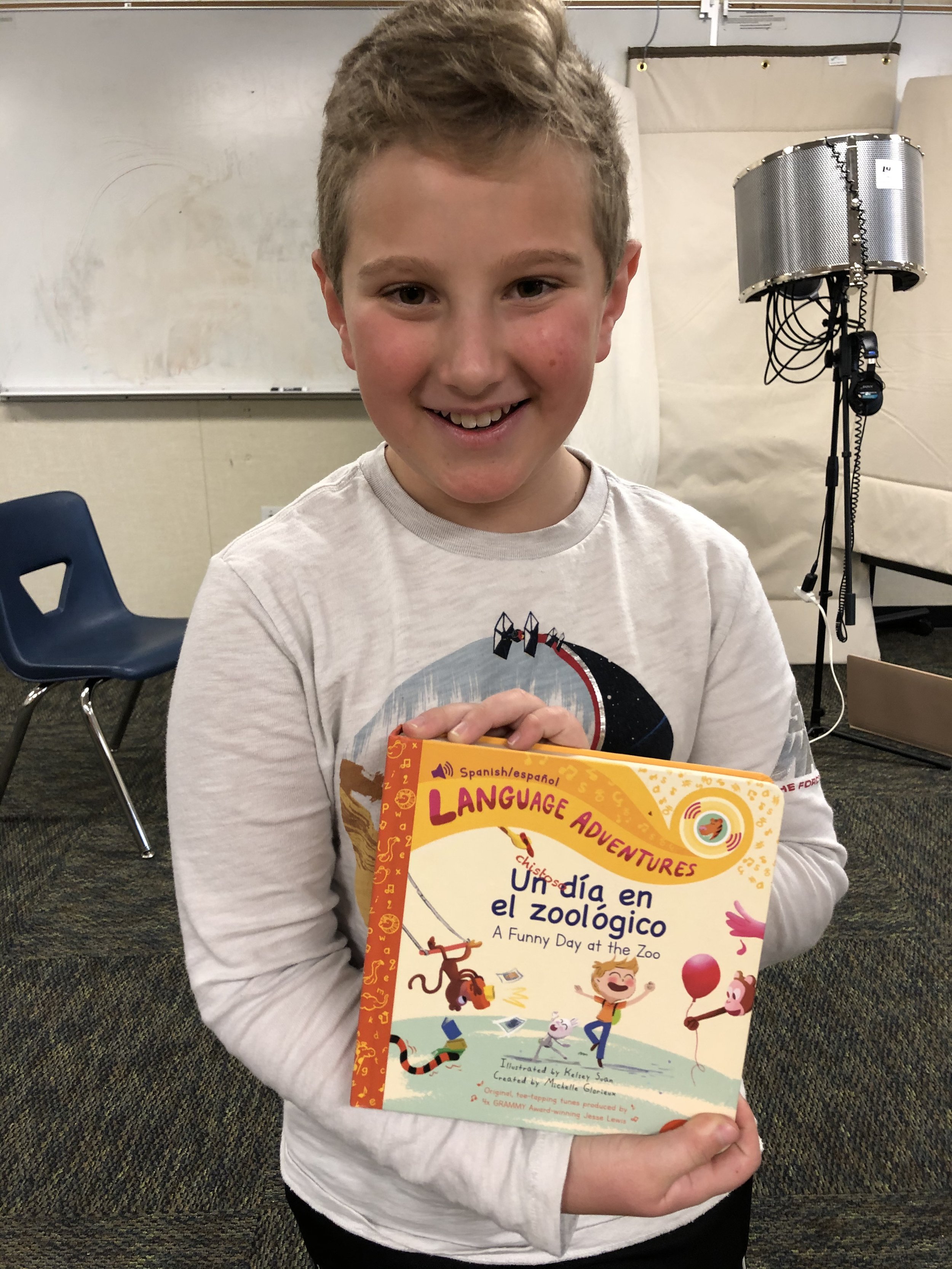Busting Bilingual Myths: A Mom's Inquiry Answered by an Expert
by TA-DA! extra-special guest contributor, Alicia Alonso-Cappas, M.S., CCC-SLP, PC
You Asked, and We Listened.
Today’s post is inspired by a question from a mother in our community.
Foreword by Michelle Glorieux, Founder & CEO of TA-DA! Language Productions
Welcome to today's conversation about bilingualism.
As an educator and a parent, I know raising a bilingual child can feel like a journey through uncharted territory. That's why we've got an expert onboard to debunk some common myths.
"Is it harmful to start teaching my child a second language later in life? I've heard it could cause developmental issues."
To provide the most informed perspective, I'm delighted to introduce Alicia Alonso-Cappas—a bilingual speech therapist and mother of two.
Her rich experience offers a nuanced perspective on bilingualism that's both research-driven and lived.
Let us explore this, shall we?
Day 9: Debunking Bilingual Myths with Alicia Alonso-Cappas
Expert Insights from Alicia Alonso-Cappas, Bilingual Speech Therapist
Alicia Alonso-Cappas and her bilingual family
As an immigrant from Colombia now living in the USA, teaching Spanish to my dual-language-learning children has been a significant family goal.
Ensuring they could connect with family in our homeland - and pass on traditions to help foster their identity and cultural values was - and is - vital.
Our commitment was doubly important as our surrounding environment, termed as a 'subtractive bilingual environment,' did not prioritize the minority language, in our case Spanish. And oh, what a journey!
Knowing that our family was immersed in what is called a ‘subtractive bilingual environment’ - or where the minority language is not valued or integrated into the school system or immediate community - we put even more effort into our research and resource gathering.
One thing to remember is that bilingualism varies greatly across families due to numerous factors. These can be internal like motivation and age of language acquisition, or external such as the linguistic environment.
It is also important to recognize that the quantity and quality of language exposure affects children's acquisition rate and language proficiency.
Along the way we encountered some well-meaning yet empirically unsupported advice about bilingualism, leading us to three prevalent myths:
The three primary bilingual myths that we came across on our bilingual journey were:
1. Children learning more than one language can get confused.
2. Code mixing (mixing languages) is a sign of language confusion.
3. In order to learn English faster, children need to stop learning or using their heritage language.
1.Dual language input does NOT confuse children.
Scientific research shows that children differentiate between languages from the early stages of development.
A multitude of studies confirm the advantages of bilingualism, including improvements in executive functioning and social inclusion.
For those wanting to go deeper:
A robust compilation of studies regarding infant speech perception has identified that from early on, infants can distinguish phonetic differences (sound differences) among the world's languages, an ability that refines and specializes as the brain matures, thus shifting their attention to solely the sounds pertinent to their native languages. Even before children attain a vocabulary of 50 words, researchers have reported that youngsters know words representing the same concept in the two languages (e.g., perro, dog). Last but not least, knowledge about the advantages of bilingualism in phonological development, metalinguistic awareness, lexical retrieval, executive functioning, and social inclusion, among others, helps reassure that bilingualism is not detrimental to language development.
2.Code-mixing is an active process in bilingual development that can vary in frequency across families.
Code-mixing is a normal part of bilingual development and serves various functional purposes, such as filling vocabulary gaps or adding emphasis.
A deeper dive:
Children demonstrate their language flexibility when they code mix by using a word or structure in one language when they do not know it in the other. Code mixing can be observed at the language's phonological, morphological/syntactic, and semantic levels. For example, morphological/syntactic (words/structure "I am bañing my doll"), semantic (meaning/words "I want buñuelo"), phonological (sounds "ball-o"). In addition, children may code-mix to add emphasis, quote someone else or as a social identifier.
TA-DA! mascot 'diving in', art by Kelsey Suan, lead for the TA-DA! Language Adventures series
(TA-DA! highly suggests this fascinating read on code-mixing here.)
3.Using and supporting the home/heritage language is actually beneficial to acquiring a majority or community language.
Research shows that a strong foundation in a home language can positively influence the acquisition of a second language.
A deeper dive:
Knowledge about the world and built conceptual networks in one language could enhance vocabulary development in another. Therefore, the use of translanguaging practices at home or in the classroom can support bilingual learning through positive transfer from one language to another. On the other hand, it is important to mention that adverse effects on children's socio-emotional and cognitive levels have been reported when language loss or an abrupt cessation of the native language happens, especially among families that only speak the minority language.
In conclusion, the effect of bilingual myths in the form of advice to bilingual families can negatively affect their ability to communicate and pass along customs and traditions to their offspring.
Communication is a human right whether a person uses one or multiple languages, and it should be protected, respected, and cultivated starting in the womb.
"El lenguaje del corazón es la mejor forma de expresión; úsalo con tus hijos!"
Alicia Alonso-Cappas
Wife and mother of two wonderful children
Bilingual Speech-Language Pathologist
Let’s Recap Those Myths!
Three Myths, Three Truths 1
Three Myths, Three Truths 2
Three Myths, Three Truths 3
Want More? Explore Laleo Bilingual Therapy!
If you’re still hungry for more discussion around prevalent myths in society, we at TA-DA! highly recommend the force known as Claudia, also a Bilingual Speech-Language Therapist & Mamá — and the tremendously inspiring voice behind the blog, Laleo Bilingual Therapy. (And cherry on top for all you Spanish speakers out there, she’s perfectly bilingual in both English and espanol.)
TA-DA!’s CEO’s Final Word:
Words worth exploring
Curious about code-mixing? It's a hot topic in bilingual development - for which lack of knowledge has led to many families, sadly, stopping their bilingual journey. For a deeper dive, I highly recommend our prior post focusing on it here.
At TA-DA!, we are steadfast in our mission to make bilingualism accessible and joyful for families, regardless of their starting environment or linguistic backgrounds.
Remember, friends, there's no one-size-fits-all in bilingualism.
Please join us in this enlightening discussion, by commenting below. And please, please, keep exploring, questioning, never give up - and above all, keep communicating and know we here at TA-DA! and our community are here to support you and your family.
Your Voice, Your Journey!
Hungry for more insights into bilingualism?
Join our 20-Day Bilingual Adventure and enrich your family’s language journey!
Explore Recent Topics Explored in Our 20-Day Community Blogathon:
Meet the Expert:
Alicia has a passion for working with minority ethno-linguistic communities, English language learners and their families.
Alicia feels strongly inspired to use her knowledge in the field of speech and language pathology, bilingualism and leadership skills to support policies that promote language proficiency, academic achievement and a shared view of bilingualism/multilingualism and multiculturalism among the Multilingual Language Learners (MLL), their families and institutions.
Currently, Alicia is finalizing becoming a Doctor of Speech and Language Pathology (SLPD) at Rocky Mountain University of Health Professions (RMUoHP).
Alicia Alonso-Cappas, M.S., CCC-SLP, PC
Further Reading:
This piece of writing reflects my own experiences coupled with findings from the following authors:
Cummins, J. (2021). Translanguaging: A critical analysis of theoretical claims. Pedagogical translanguaging: Theoretical, methodological and empirical perspectives, 7-36.
Ferjan Ramírez, N., Ramírez, R. R., Clarke, M., Taulu, S., & Kuhl, P. K. (2017). Speech discrimination in 11-month-old bilingual and monolingual infants: A magnetoencephalography study. Developmental Science, 20(1), 10.1111/desc.12427. https://doi.org/10.1111/desc.12427
Fillmore, L. W. (1991). When learning a second language means losing the first. Early Childhood Research Quarterly, 6(3), 323–347.
Guiberson M. (2013). Bilingual myth-busters’ series: Language confusion in bilingual children. Perspectives on Communication Disorders & Sciences in Culturally & Linguistically Diverse (CLD) Populations, 20(1), 5–14.
Paradis, J., Genesee, F., & Crago, M. B. (2021). Dual language development and disorders. A handbook on bilingualism and second language learning, 3rd ed. Paul H. Brookes Publishing Co.
TA-DA!, your trusted guide to making bilingualism accessible and joyful. Click below to explore our award-winning products.





